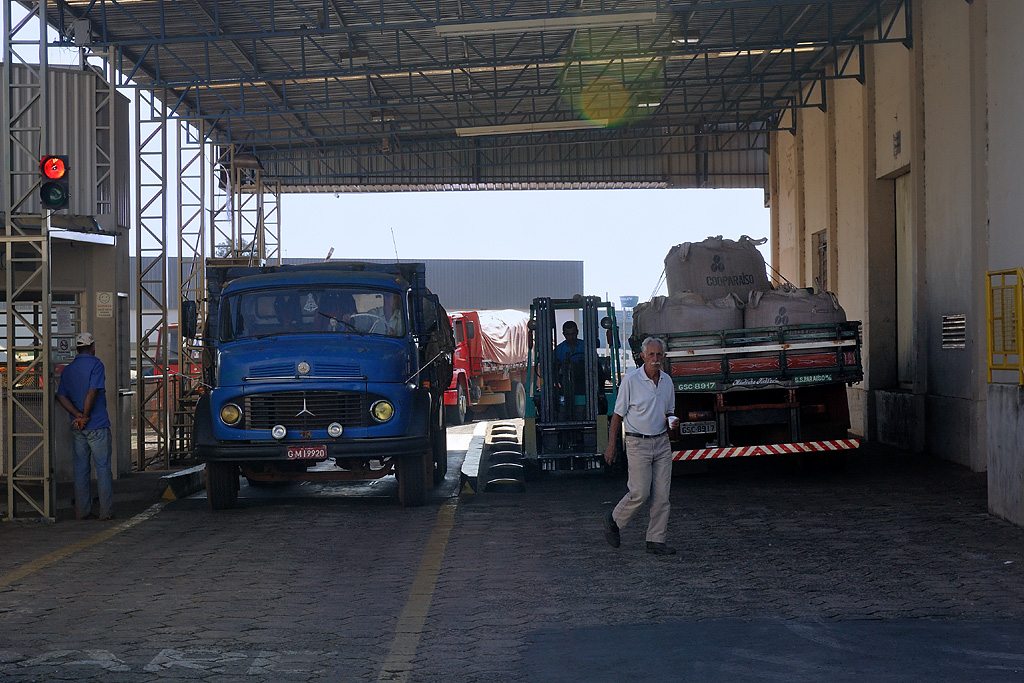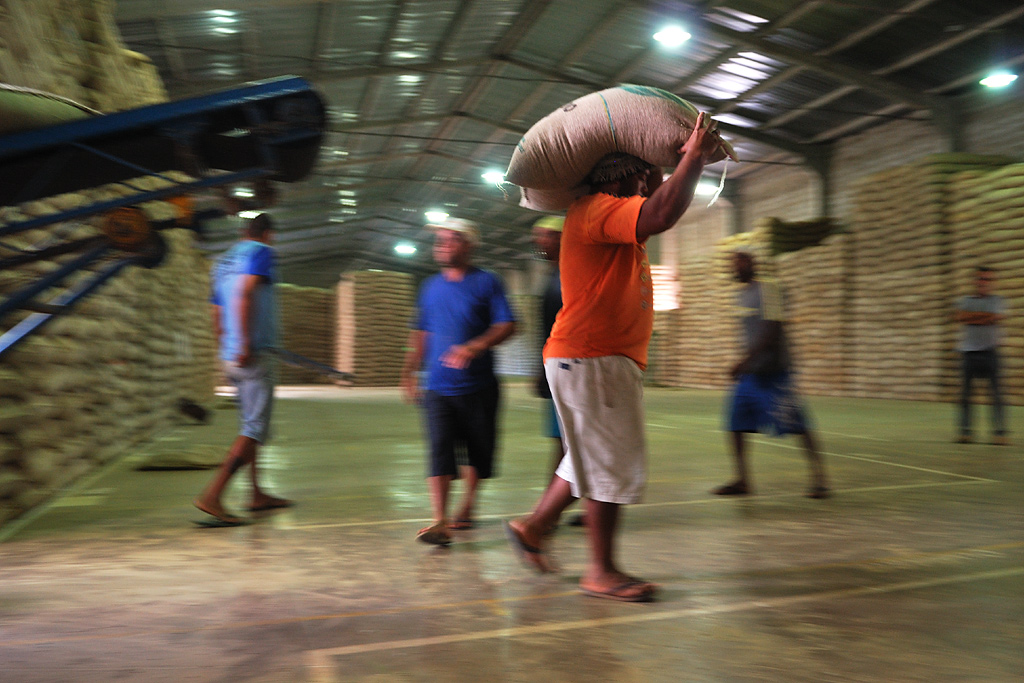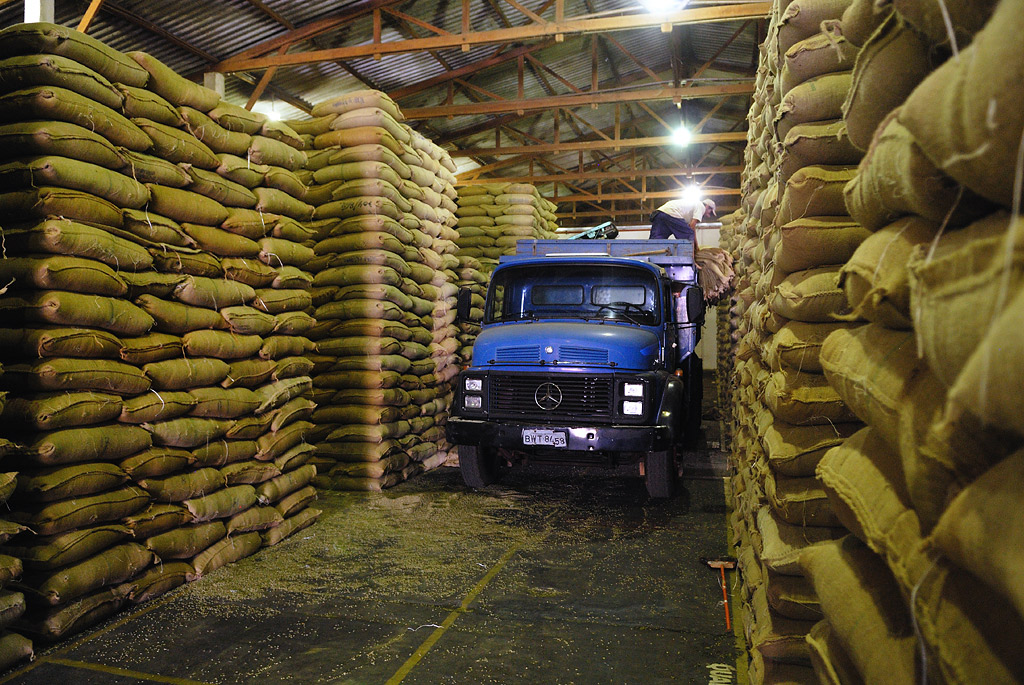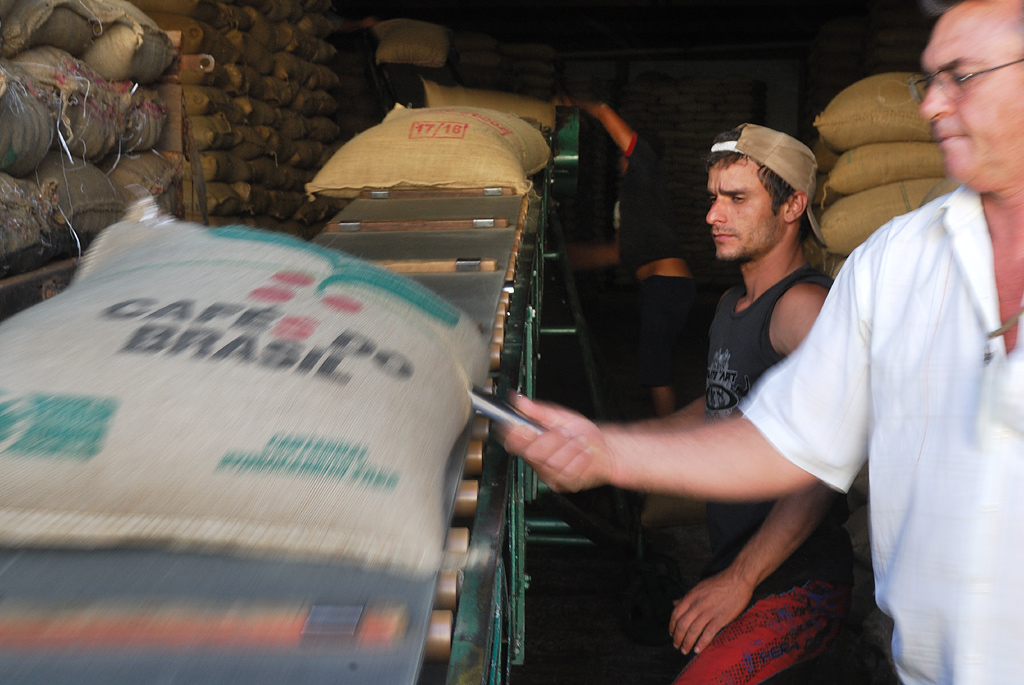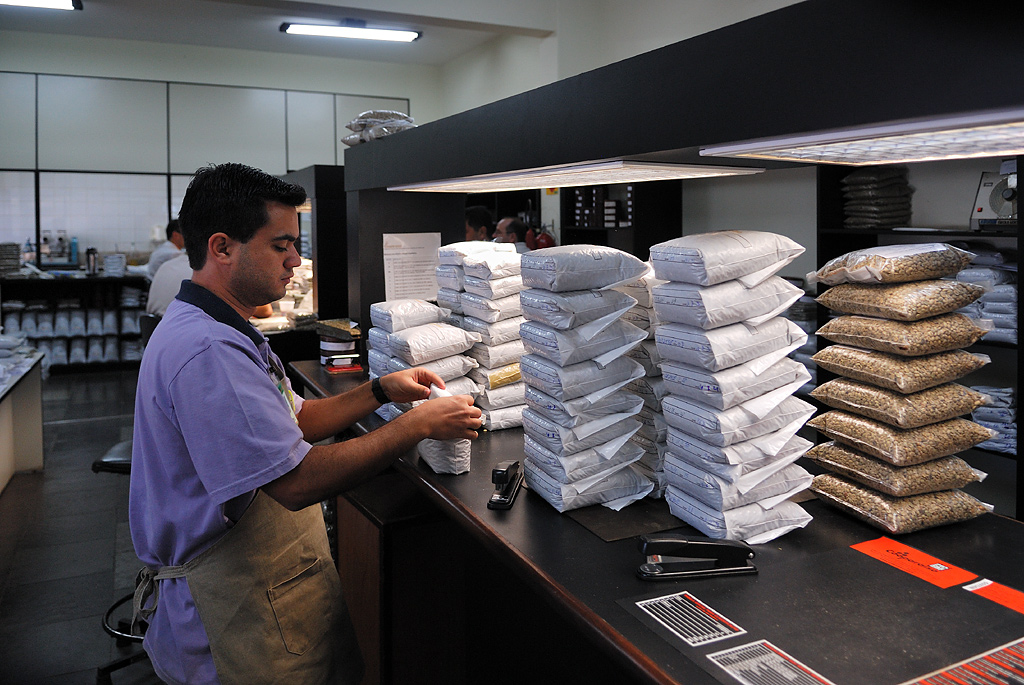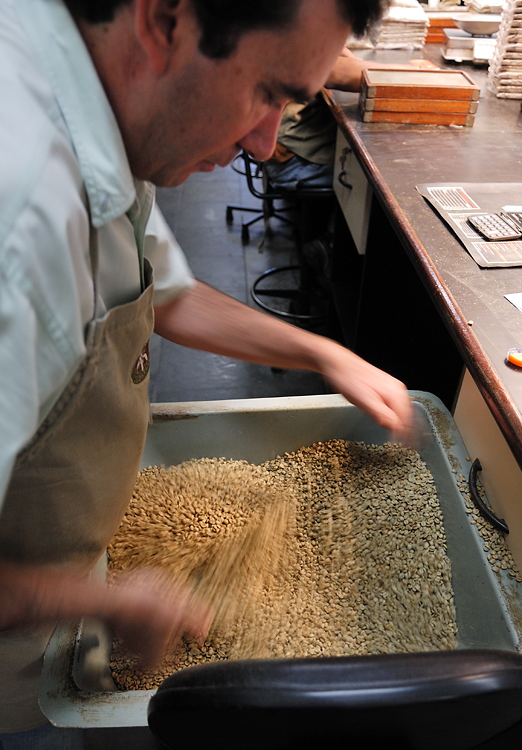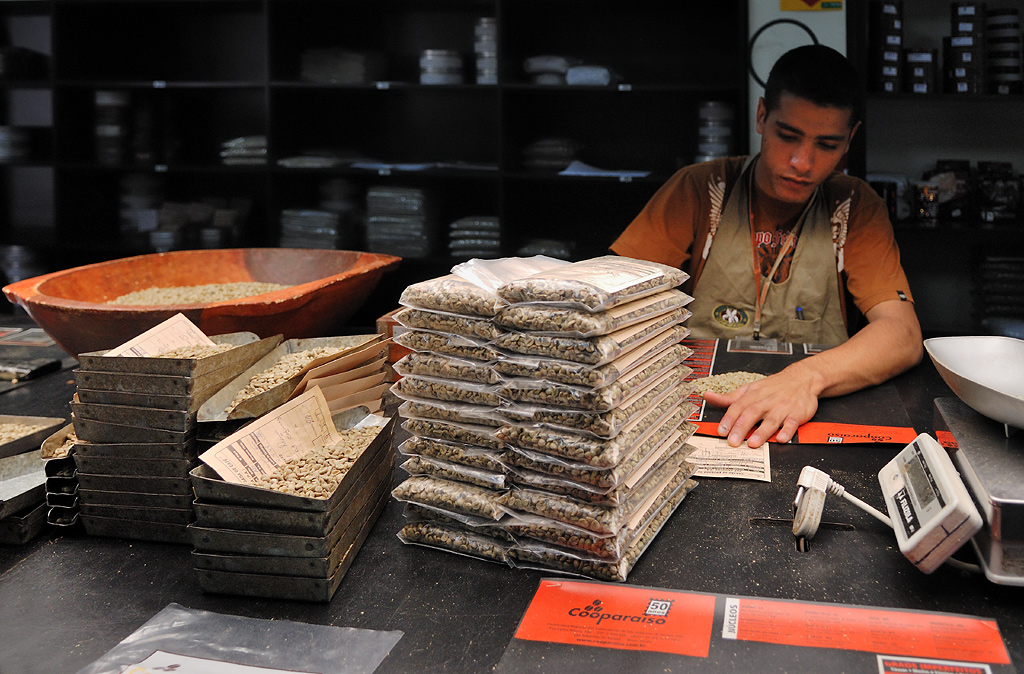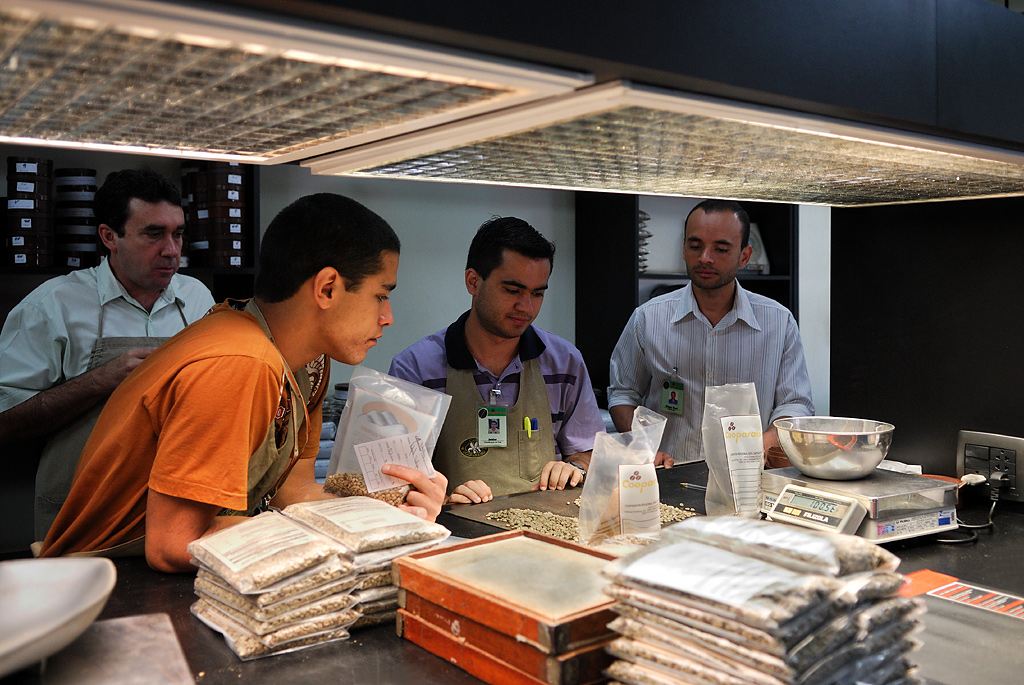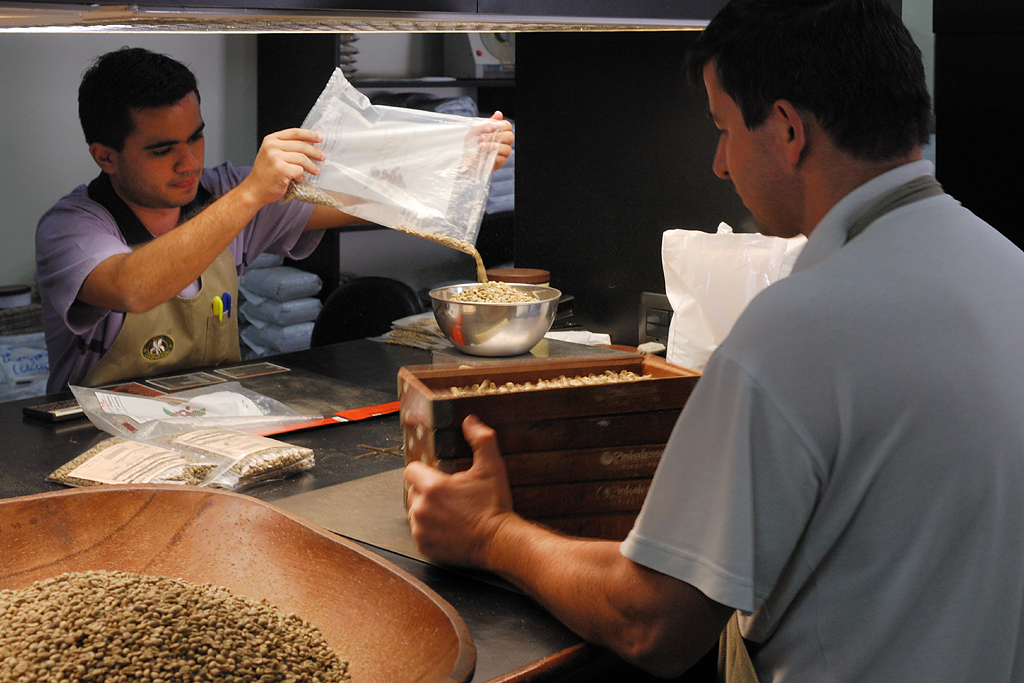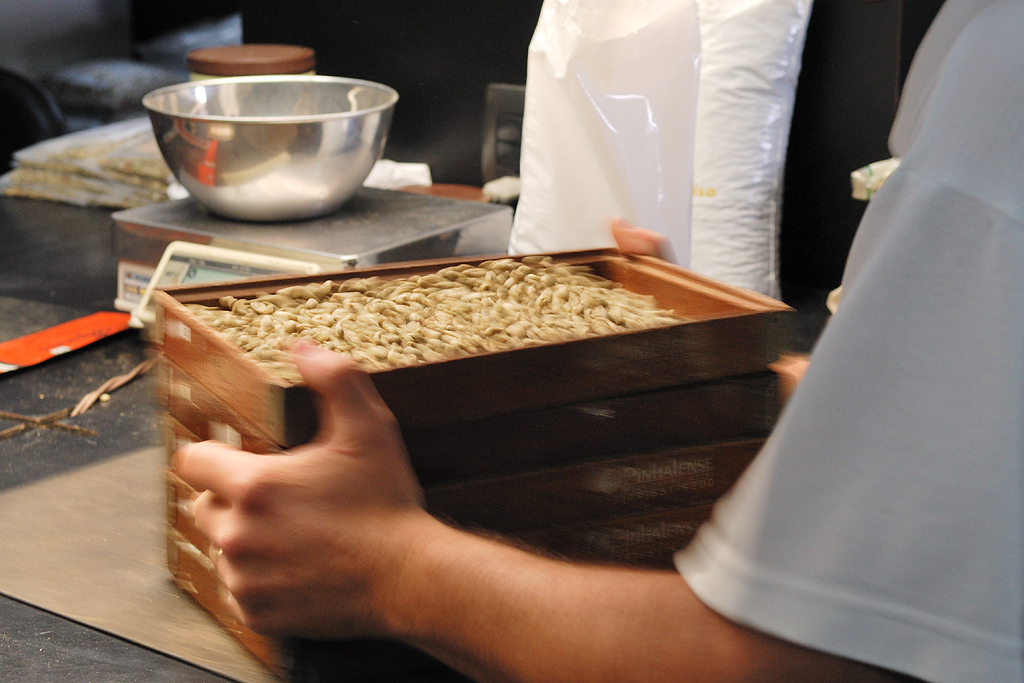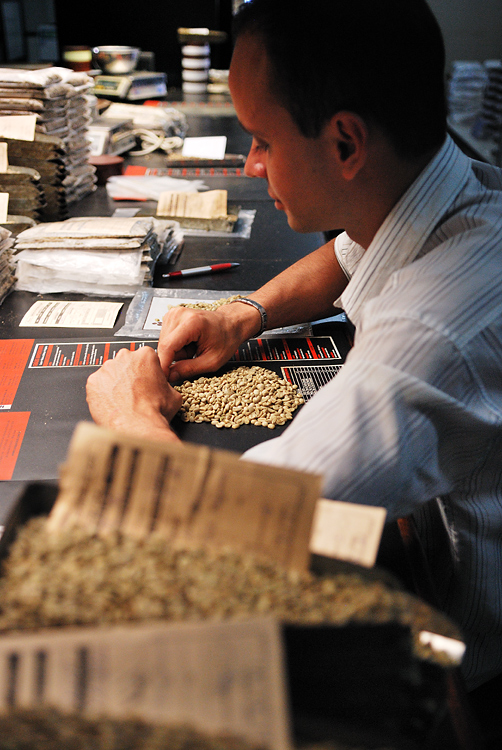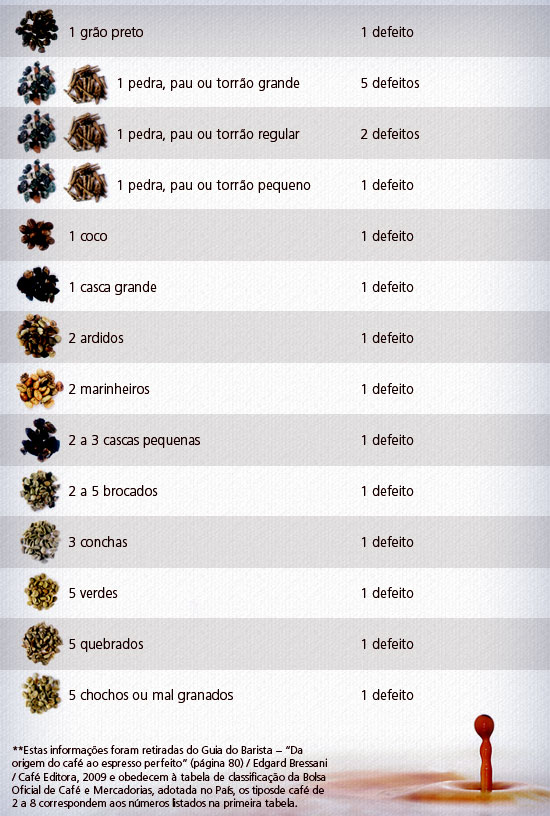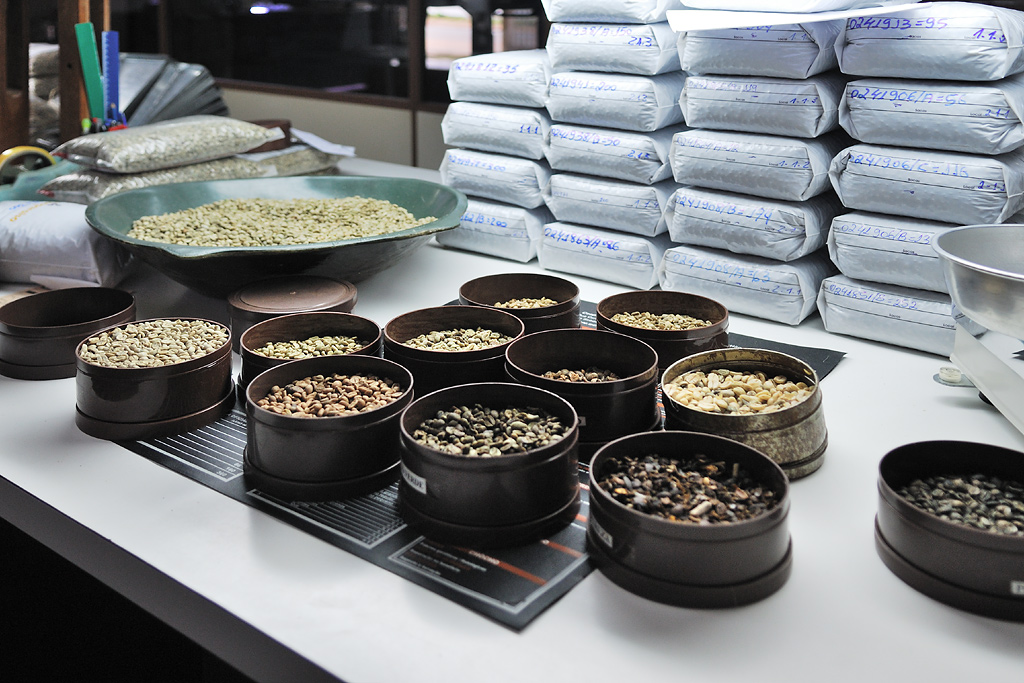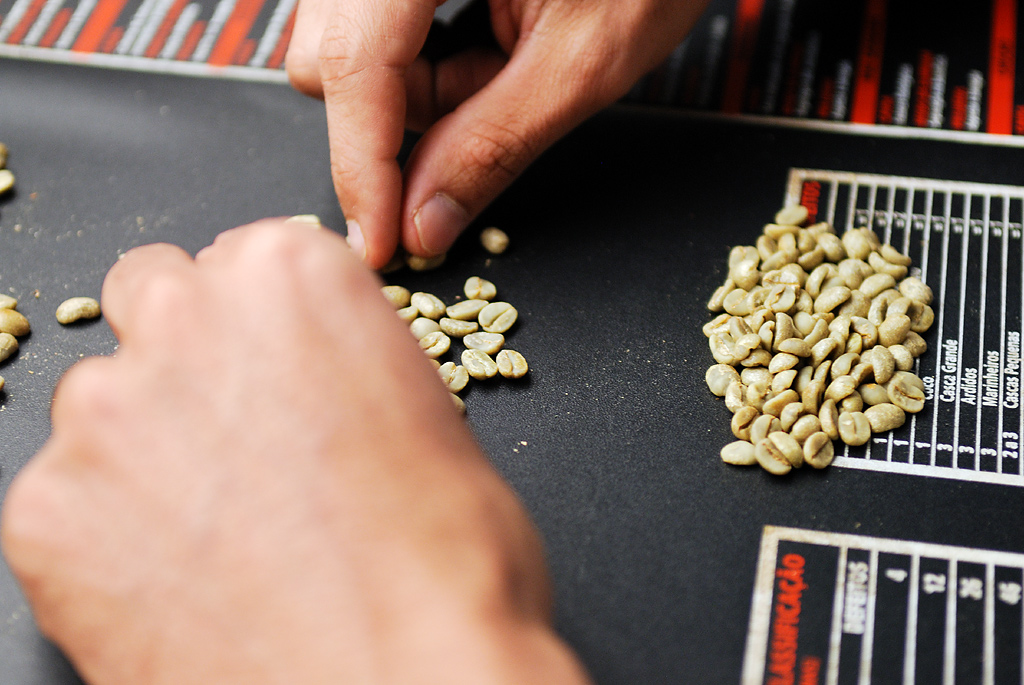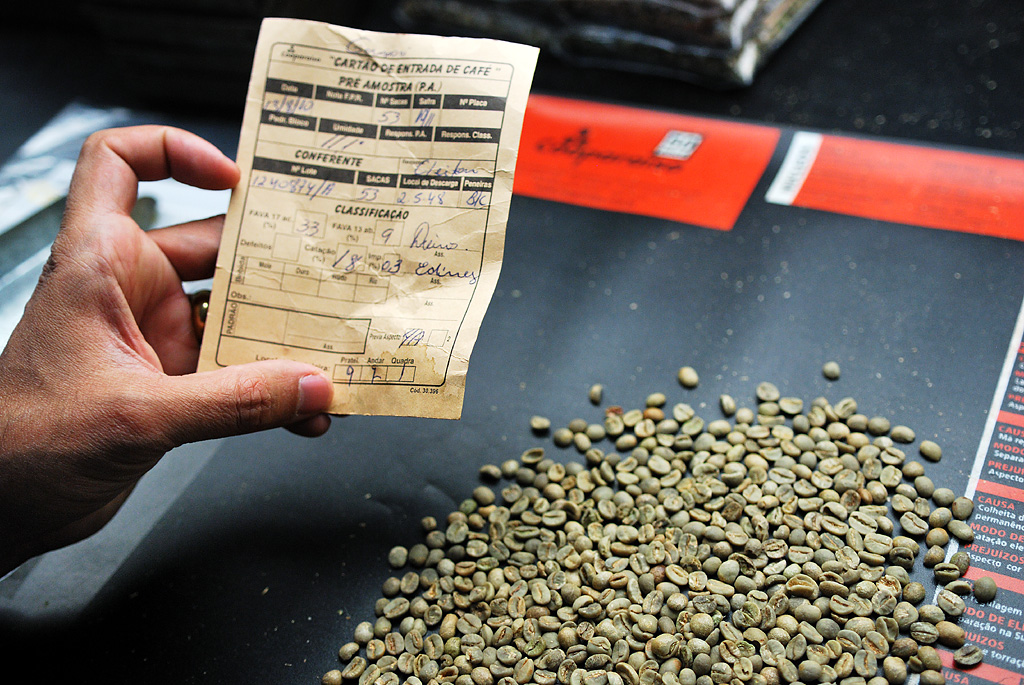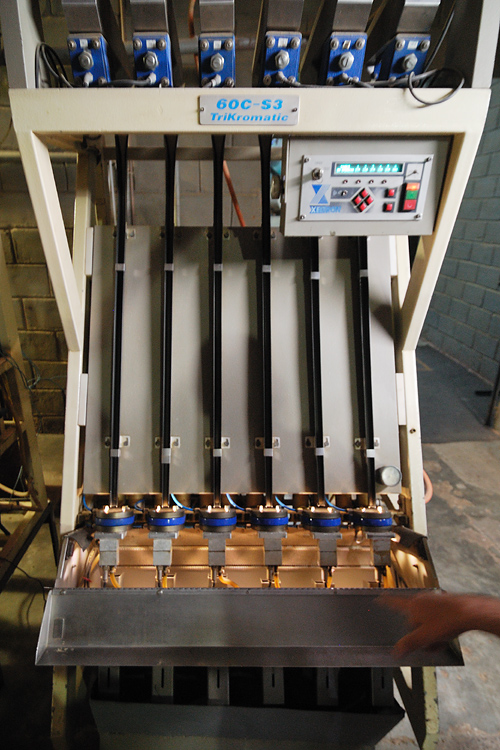A photo documentary on coffee cultivation in Brazil
- Page 4 -
| Classification and Tasting ('Classificação e degustacação') The Coffee-Cooperative Cooparaíso is located in the small town of São Sebastião do Paraíso. Its 65,000 inhabitants live of and with coffee: the city is situated in the heart of the coffee mountains (‘montanhas cafeeiras’), south of the state of Minas Gerais (‘Sul de Minas’). Cooparaíso buys the raw coffee of the surrounding coffee farmers and then sells it further to the whole world. The whole truck is weighed upon delivery of the coffee and again when it leaves. It is a type of ‘Before and After scenario’. The standard weight of the coffee sacks is – since the beginning of coffee cultivation in Brazil – 60 kgs. For a part of the way, till the final storing place, the sacks, mainly while unloading, have to be placed manually. Not difficult, but very hard work. My trade association concerns were laughed off by the warehouse manager and with words of gratitude declined: “Ach, they are used to that.” Well, if that is how it is. The storage of the sacks takes place according to a smart system and is linked to a central database. From every sack
delivered, the warehouse manager personally
takes a sample with a special “hollow knife”, which is then examined in the Classification Department by Daniel Pereira. The result of his classification is linked with the delivery and its warehouse location. That way the responsible people at the Cooparaíso know at any time, how much coffee there is, of which quality and at which warehouse location. |
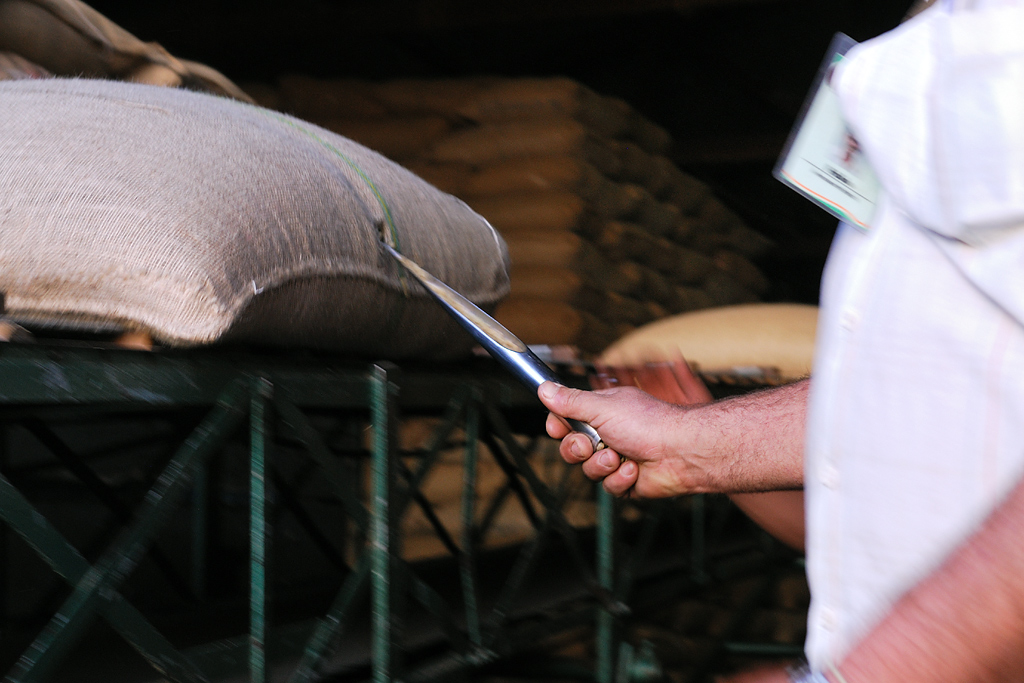
'Hollow knife''
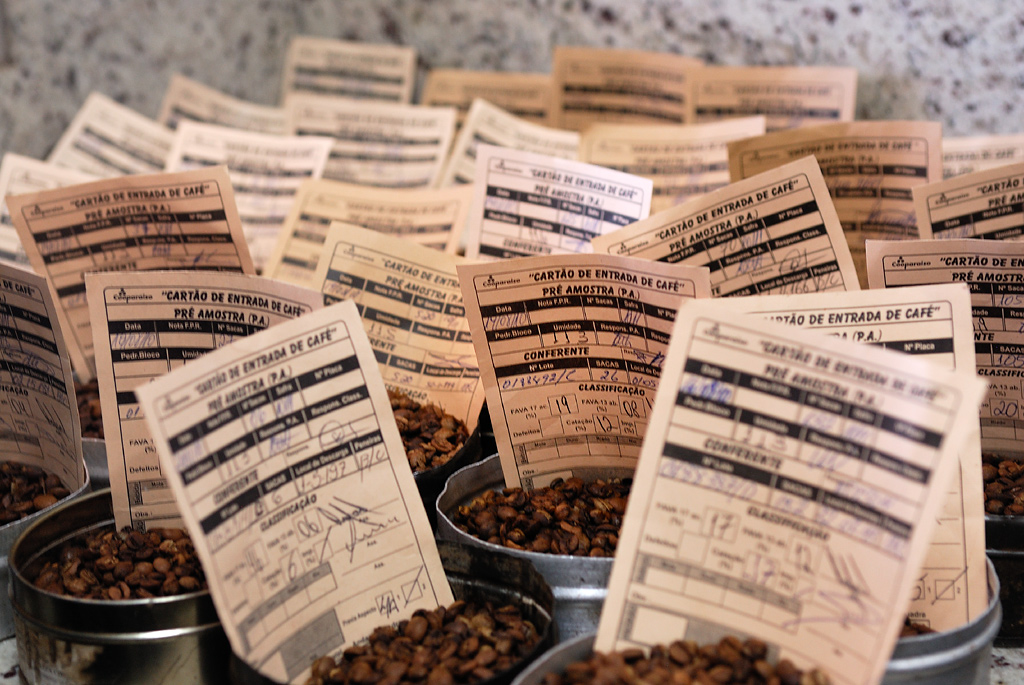
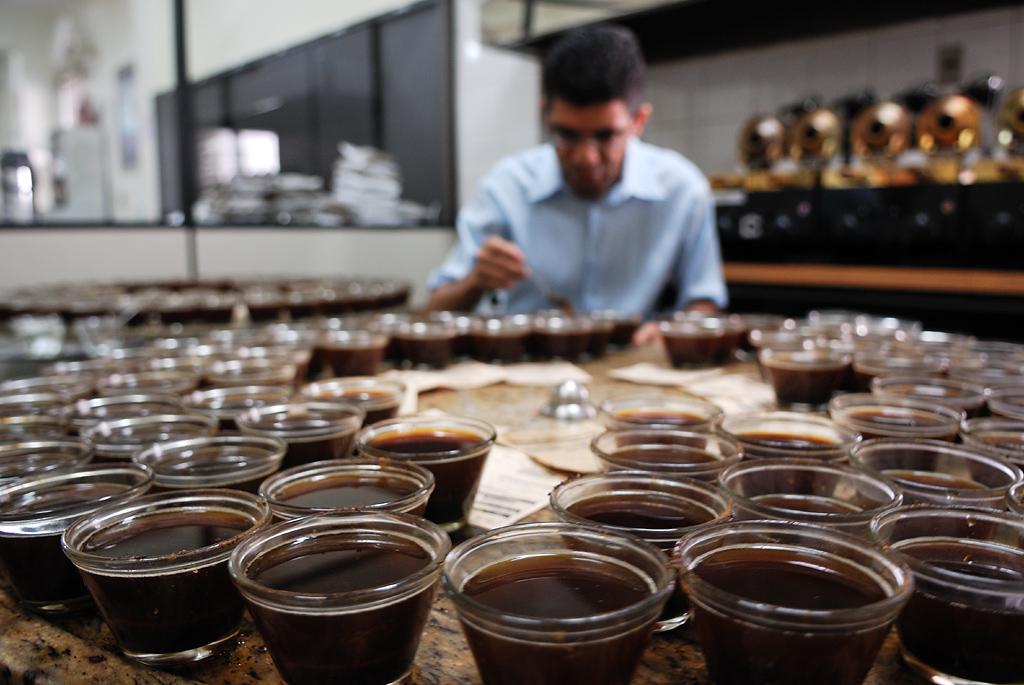 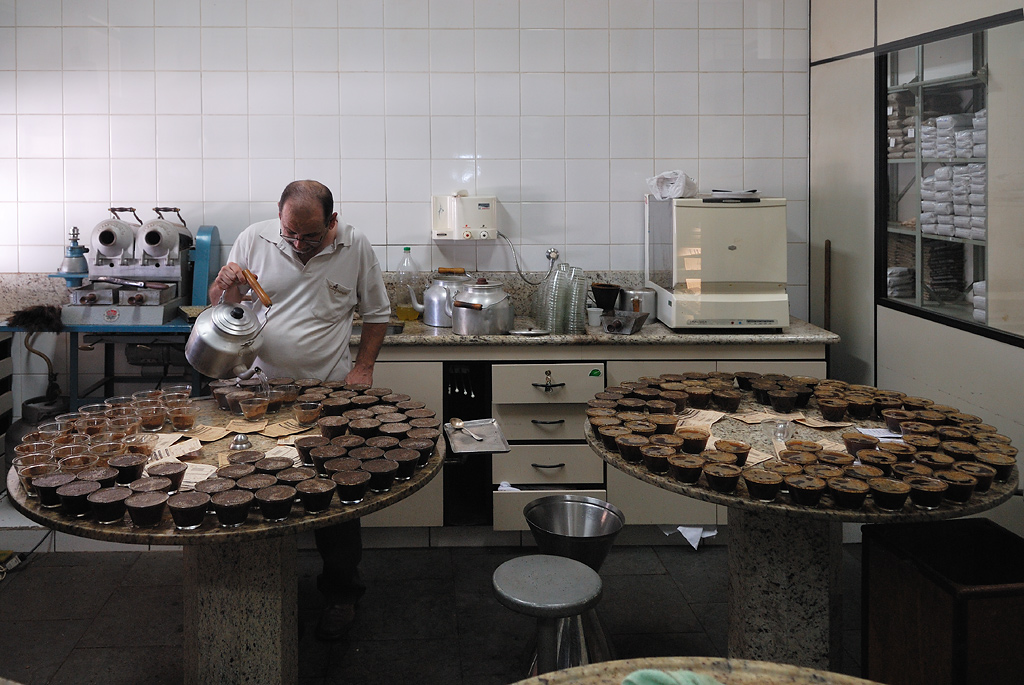 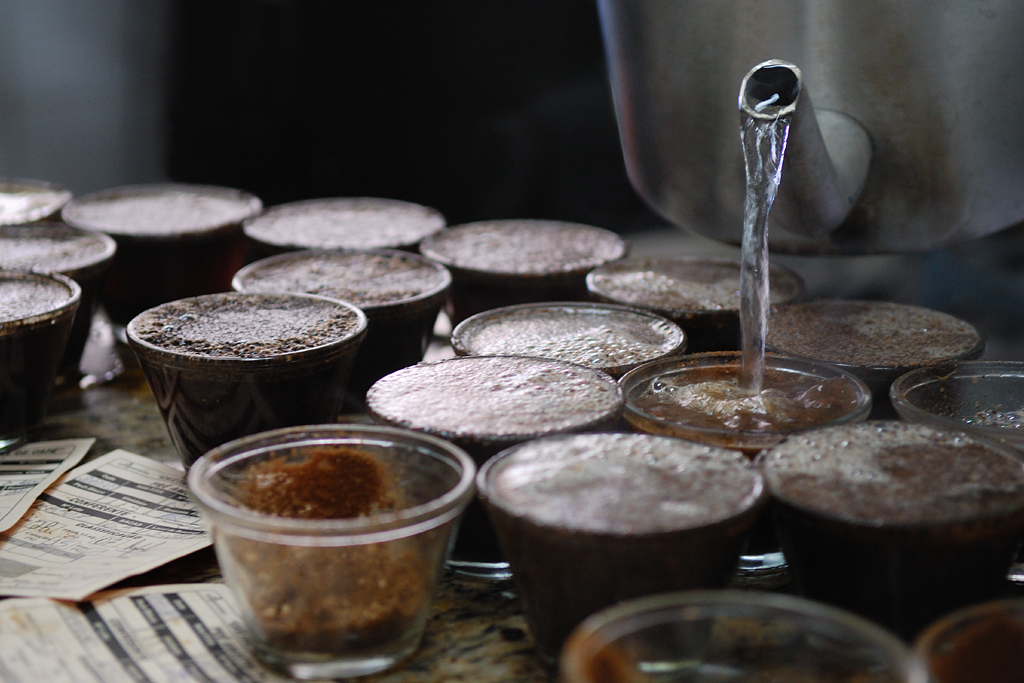 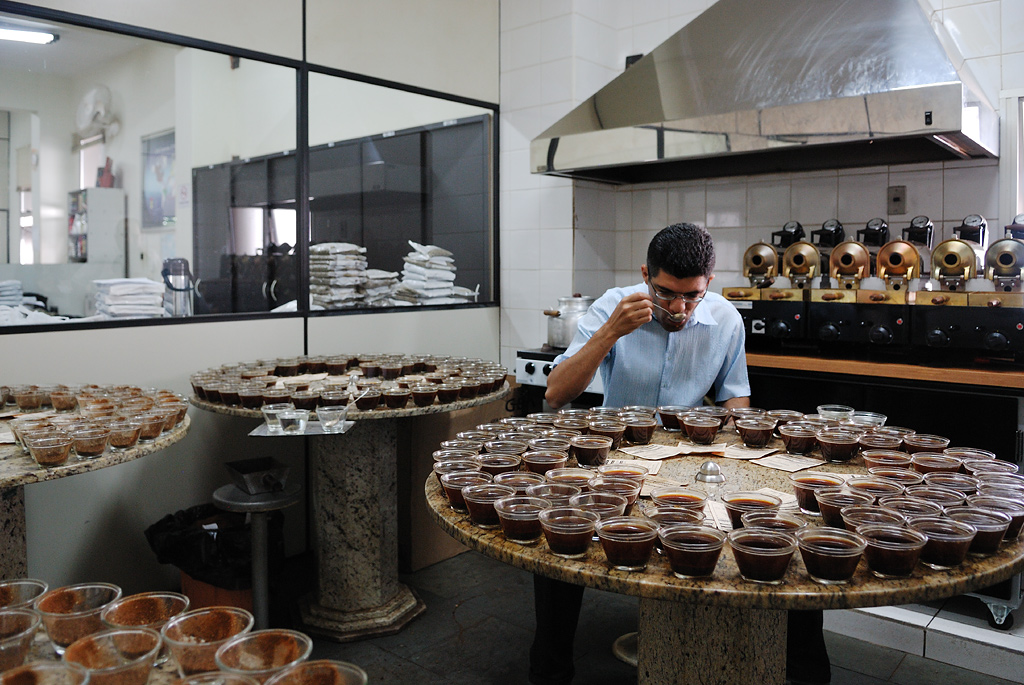 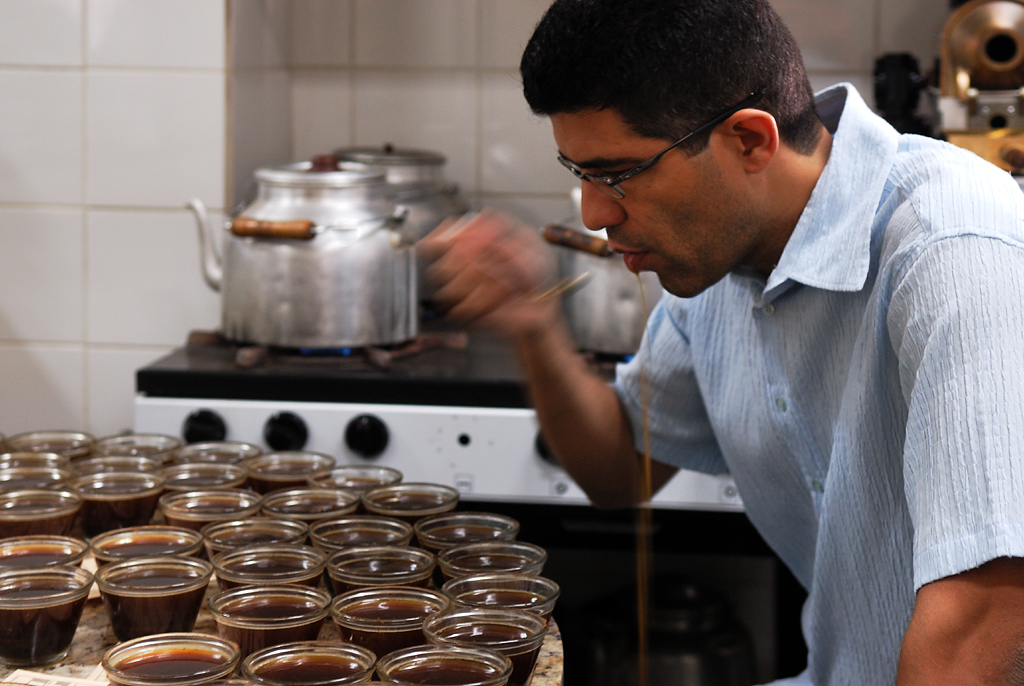 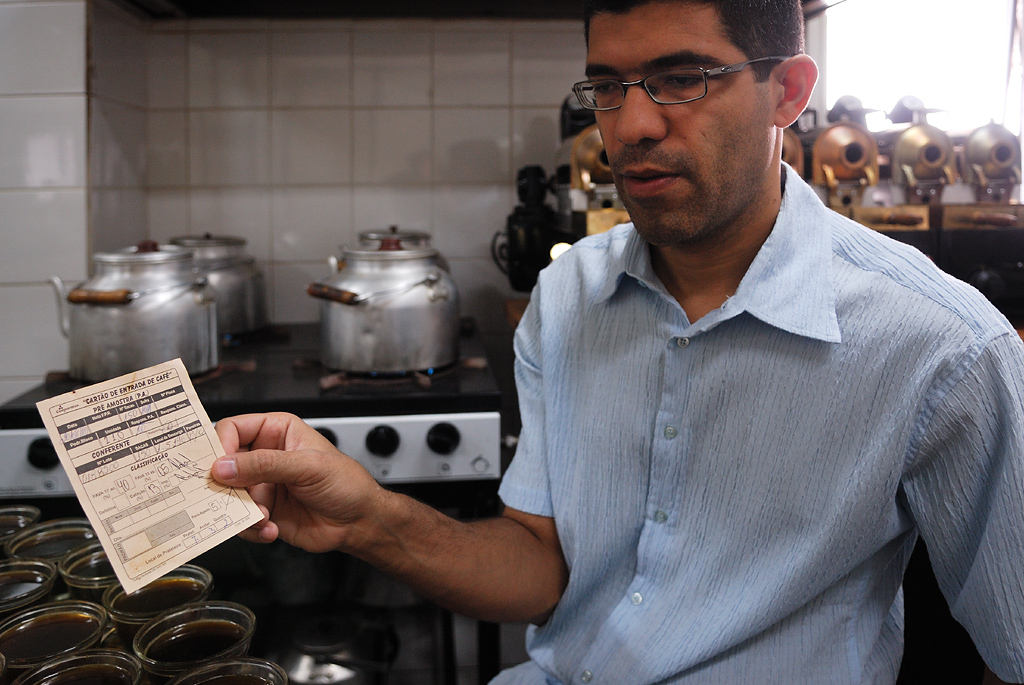 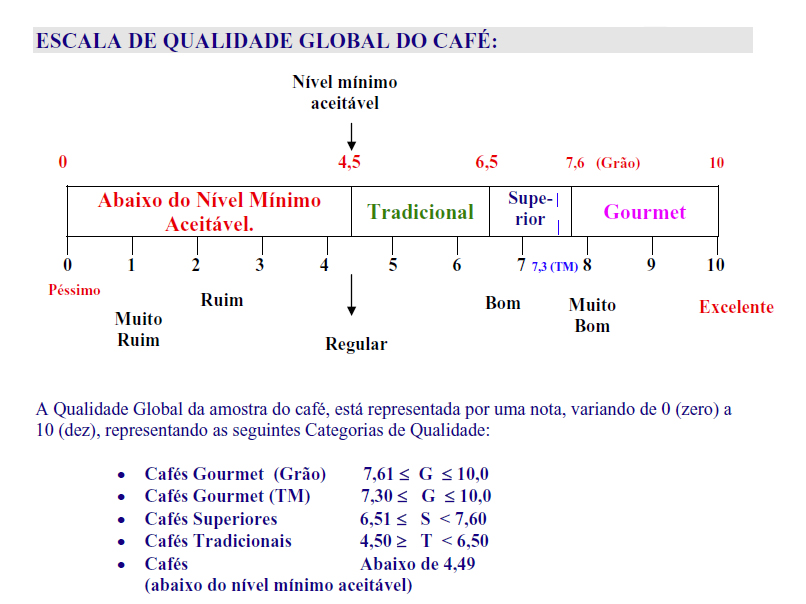 Table – Thanks to Patrícia Nasser, Belo Horizonte (Click on picture to enlarge and open in a new window) 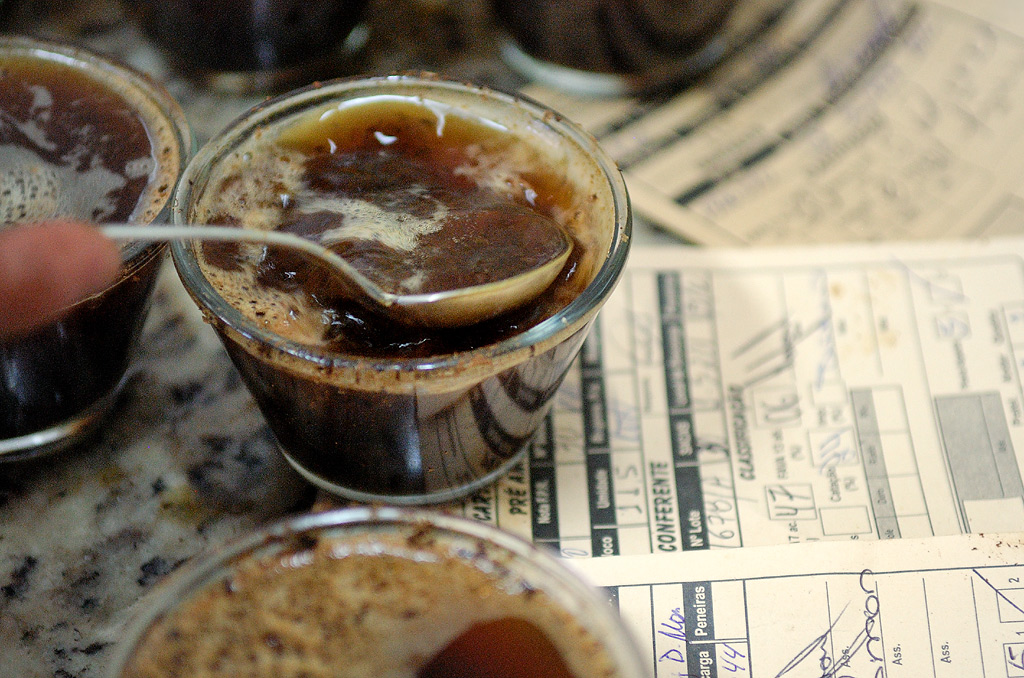 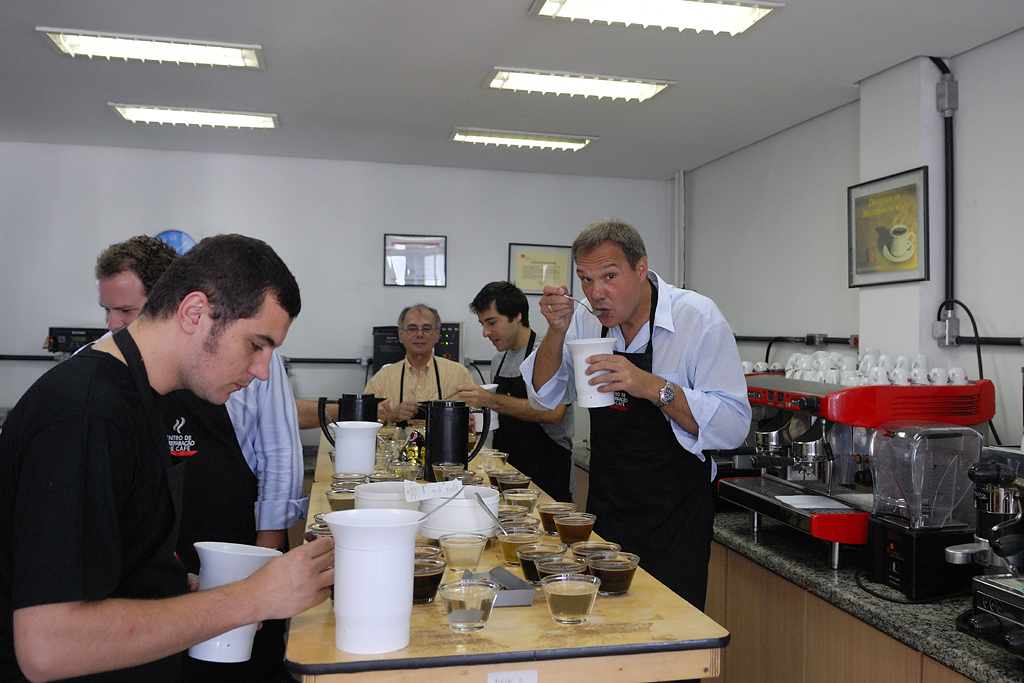 Me (right) at the course 'Classificação e Degustação de Café' in São Paulo |
The Coffee Tasting ('A degustacação de café') I had been looking forward to this for long: finally the first fresh aroma of coffee! It billowed a little from across the department and soon ‘Master Taster’ Daniel explained this part of his work to us. It quickly loses out on the romanticism, but never on the wonderful aroma! The tasting – or cupping – of the coffee is aimed at evaluating the coffee for its appearance and aroma and most importantly for the quality of its flavour. The prearrangement and preparation of the sample has been from time immemorial standardized to ensure comparability. These standards ('padrão') have been exactly described in relevant publications. There is also a form that is filled out by professional testers. Cooparaíso has its own batch cards in which the results are directly recorded; they are later transferred to the database. Preparation of the Sample ('Preparação das amostras') Daniel must not prepare his own cafezinhos – for that there is an experienced Master of Ceremonies. I simply call him mestre (master). Shortly before the coffee cupping the mestre begins first with the roasting process. Then the coffee is simply the freshest. The roasting equipment is quite new, “and it comes from Germany and is the best,” he says proudly, praising again the native land of his guest. Since I had already heard that, there seems to be some truth in it. The roast grade must turn out to be light to medium light (medium roast grade) and should show a value between 58 and 63 on the standard roast scale (‘Agtron-Scale’). Maximum 15 minutes before the cupping begins, the mestre starts to grind the coffee. The standard dictates that the coffee is ground with a middle-grinding grade, and is indeed coarser than filter coffee. After the coffee comes out of the grinder, where its enticing fragrance is emitted further, the mestre begins to infuse the coffee with fresh, clear water – under no circumstances should it boil further! The ideal water temperature during infusion is 93°C. 8.25 g of coffee powder per 150 ml water is infused in measured glasses. After a rest period of about three minutes, coffee is cooled at around 65°C and is also almost ready to be tasted. As the last step of preparation, the mestre skims the foam from every cup, which has arisen due to the infusion: the concentration of the bitter substance in the foam is a bit higher than in the drink, and can distort the cupping. Next comes Daniel’s powerful discipline, which he himself explains. I believe him gladly and am surprised by his speed and the sound effects. Daniel does not drink leisurely, a little here and there; he sucks on a little quantity of liquid from his special spoon with great force and a loud sound, turns immediately to the next cup, spews out the sucked coffee in a big spittoon, while he starts feeding and sucking on his next batch. This moves in a quick, long practiced rhythm. Sometimes he stops, grabs a couple of cards, and jots down quickly his assessment. Then he shows me the card, grins and explains: “By absorption, the coffee mixes better in the palate with the oxygen, which releases the flavour further. The three coffees that I have tested just now are hard, lightly acidic and with a taste of astringent. Good coffees but not top quality coffees.” Through this coffee cupping the coffee will be divided in the following categories: 1. Estritamente mole (very mild, lightly sweet) 2. Mole (mild, soft, tending towards sweet) 3. Apenas mole (lightly mild, tending to astringency) 4. Dura (hard, lightly acidic, with a taste of astringent) 5. Riada (light iodine flavor, reminiscent of leather) 6. Rio (with unpleasant iodine taste, reminiscent of medicine) 7. Rio Zona (unacceptable, strong and biting medicinal taste, harsh, reminiscent of phenol) The last three terms relate to the regions in which a particular bean type occurs, which calls the above mentioned taste its own: the regions around Rio de Janeiro and ‘Zona da Mata’, a region in the state of Minas Gerais. Assessment of the Sample ('Avaliação da amostra') At the end, Daniel assesses the overall impression of the tasted coffees. Is it bitter, does it have a full body? Does the coffee taste evaporate quickly or does it remain for long on the palate? The evaluation system describes the following aspects; each aspect is evaluated whereby a scoring system is applied once again.
The evaluation scale ranges from 0 for very poor to 10 for excellent:
Thus every aspect can be exactly classified, for e.g. the aftertaste can be assessed in the ‘Good’ section with 11 steps. From the individual assessment of the different aspects a sum total is formed, which evaluates the coffee in totality. An acceptable coffee begins from 4.5 total points ('café tradicional'), more categories include café superior and café gourmet (refer to the table on the left). Some Vocabulary on Tasting ('Um pouco de vocabulário da degustação') The vocabulary of the coffee Master Tasters is really as exciting as that of the wine tasters. During coffee tasting, adjectives such as ‘chocolaty’, ‘floral’, ‘marzipan’ or ‘malty’ appear. It can so happen that, it constitutes of a typical flavour or aroma, but it cannot be rightly aligned. Nutty, chocolaty, floral and fruity flavours are typically positive coffee-flavours. But what smells or tastes like straw, rubber, medicine, rancid butter, or burnt is evaluated as negative. A good coffee distinguishes itself further through an even balance between sweet, bitter and acidic. Further, a coffee can smell and taste as follows: Smoky, chemically, like medicine, chocolaty, caramel, malty, earthy, floral, fruity, as in grass / herbs; nutty, rancid, burnt, rotten, like rubber, like old rubber (car tires!), like tobacco, like wine, wooden or astringent etc. At the Centro de Preparação de Café in São Paulo I did a course on “Classification and Tasting of Coffee”. I can still hear two, beautiful and spontaneous exclamations of our teacher: • “Mmmhhhh, I taste the rain, that falls on the earth.” ('Sinto a chuva no chão.') • “Oh! This coffee ends well in sweetness.” ('Oh! Este café finaliza bem na doçura.') |
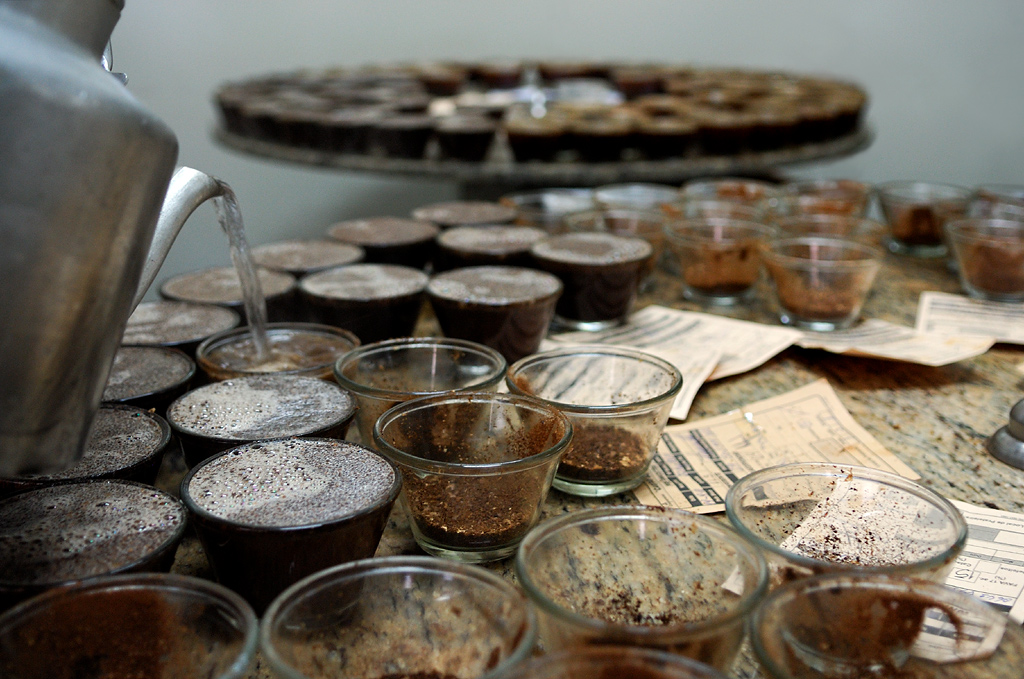
| Further Processing ('O rebeneficiamento de café') Depending on which quality a customer of the Cooparaíso wishes for, it sells the coffee either directly from the warehouse or the stored coffee is further improved upon. This means that the coffee is directly sorted by the Cooparaíso and ridded of defects. The storage workers open the jute sack of the stored coffee: they cut open the top, lay it on the conveyor, and the sacks empty themselves out. One of the workers must just catch the empty sacks. From the warehouse underneath him there is a complex tubular and elevator system, which transports the coffee to the respective workstations. The vibrating machine for e.g. can sort purely mechanically light foreign bodies like small twigs or branches, as well as broken pieces of beans. Under the slanting surface, a light air current blows upwards. The additional lateral vibrations causes the lighter particles to migrate to one side, which can then be sorted out. The process is repeated 2-3 times and afterwards the coffee is considerably homogenous. Particular defects that cannot be sorted out by weight differences, for e.g. the “PVA” (green, black and ‘burnt’ beans) are sorted out at Cooparaíso with high-tech weapons: with photo cells. The coffee
beans fall individually through the tracks. Once down, the
photocells, which can differentiate the subtle colours, analyse in high speed, whether a particular colour may pass or not. The green, black or brown beans are catapulted out through a nozzle, which is located just under the Photocell, through a strong blast ofair. All of this functions so quickly and precisely that one cannot seethe procedure with the naked eye. Fascinating! Cooparaíso sorts or sieves the coffee according to the size class and can soon satisfy the demanding wishes of the customers – naturally at a higher price. As a rule, they do not pack the processed coffee in the traditional 60 kg sacks any more, but they work with the Cooparaíso with the so called ‘big bags’, a North American storing system, that is now more and more prevalent: it spares a lot of manual labour. In one big bag, 20 conventional coffee sacks, or 1.2 tons of coffee fit. |
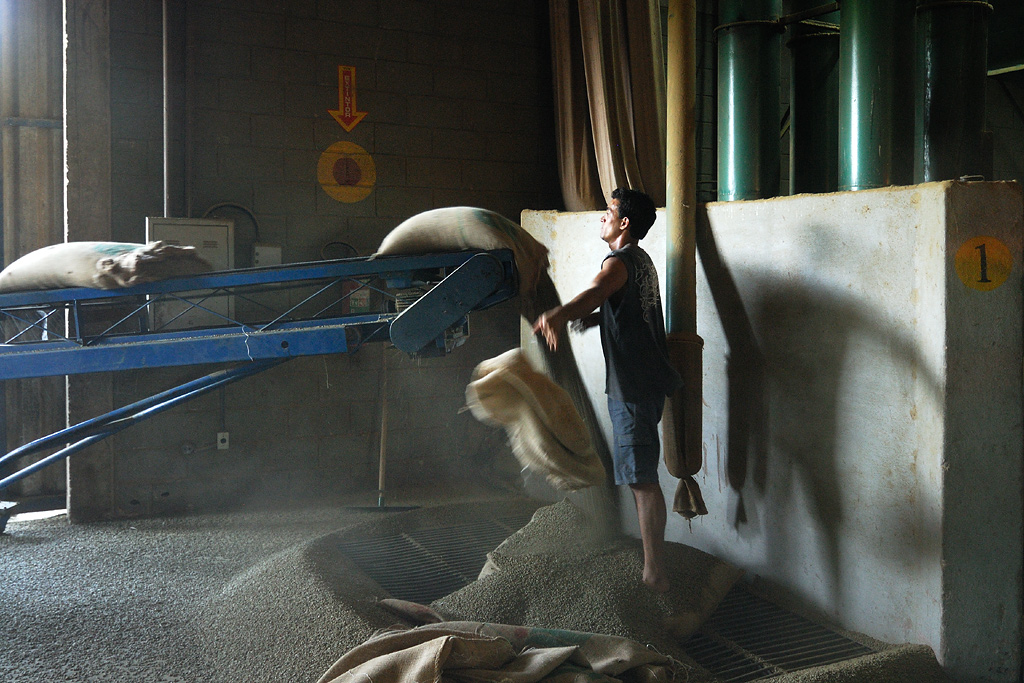 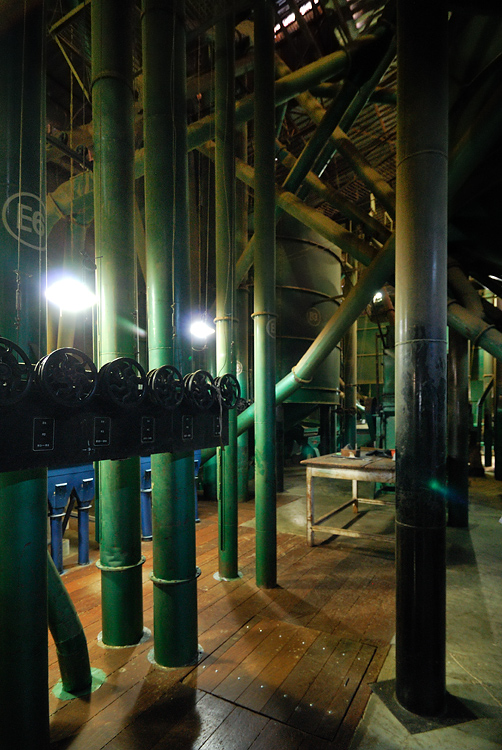 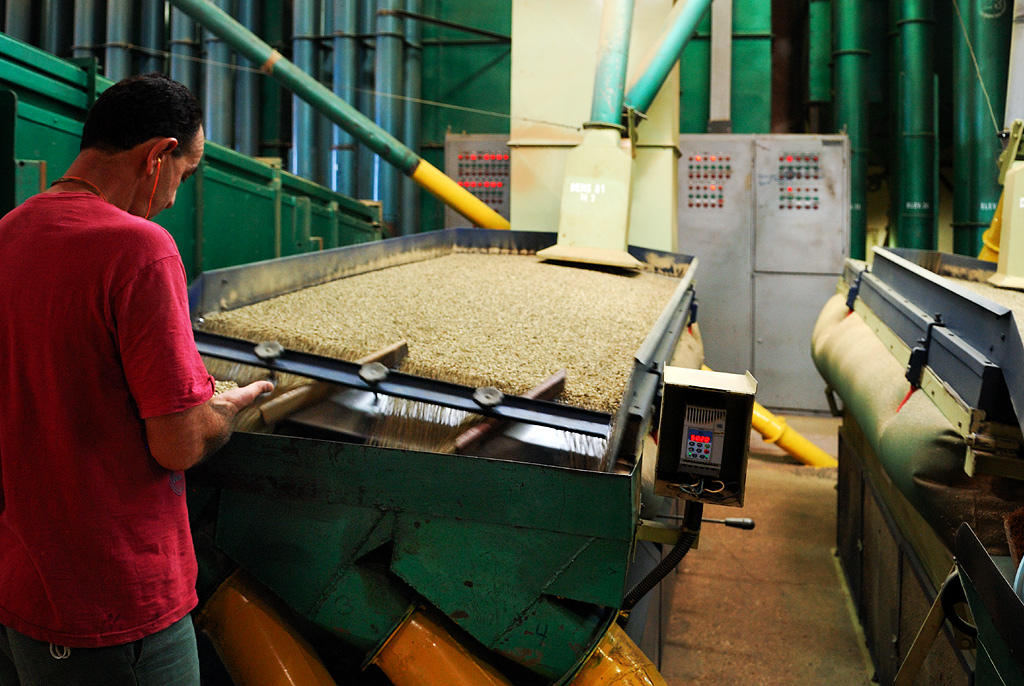 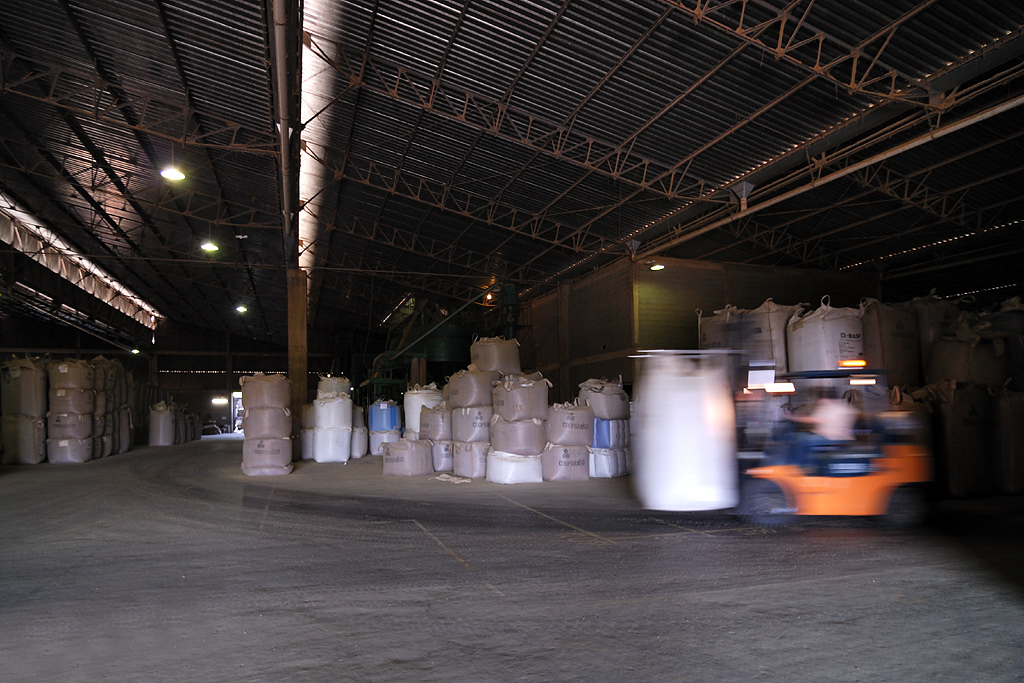 |
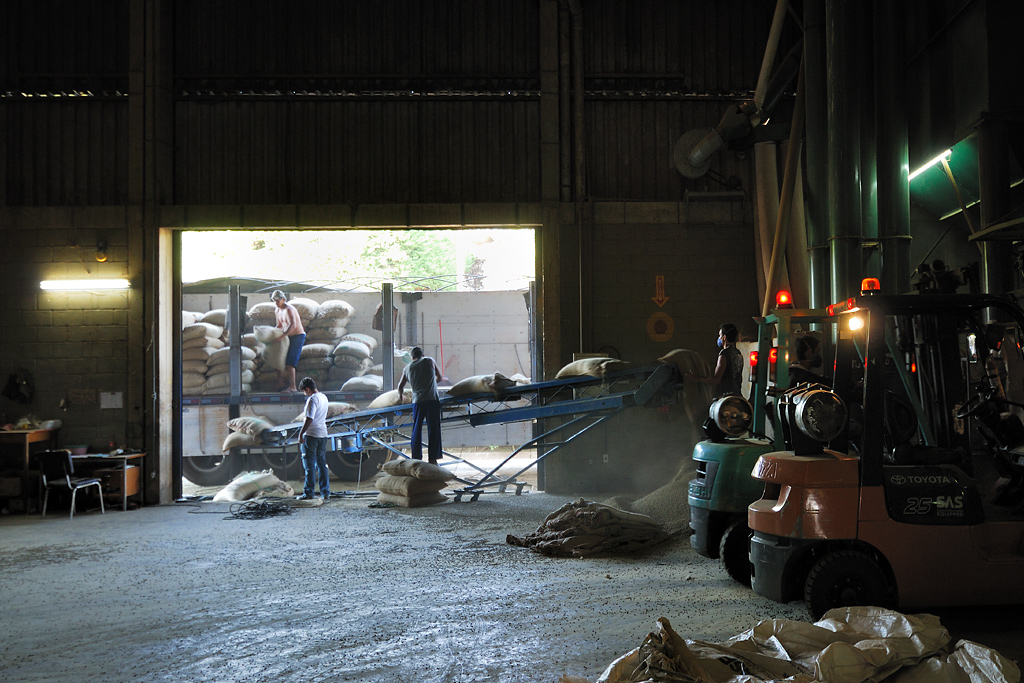
Advertisement
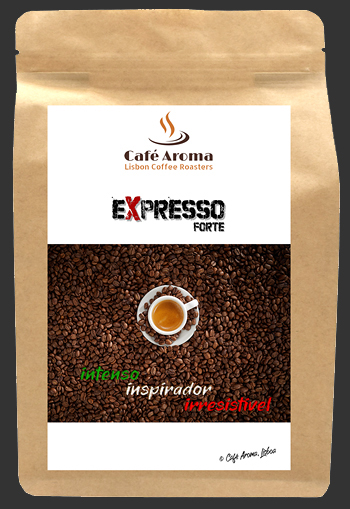
For all the fans of a darker, intense and irresistible espresso.
(In Portugal, espresso is spelled with an "x")
Roasted darker and with a higher Robusta content, this coffee is the choice for your espresso machine or moka espresso maker.
The flavours of chocolate and roasted nuts are covered by a soft and delicious foam, making it irresistible.
The higher caffeine content makes you alert and inspired for the challenges of the day.
© Copyright Photographs and Texts: Jochen Weber
